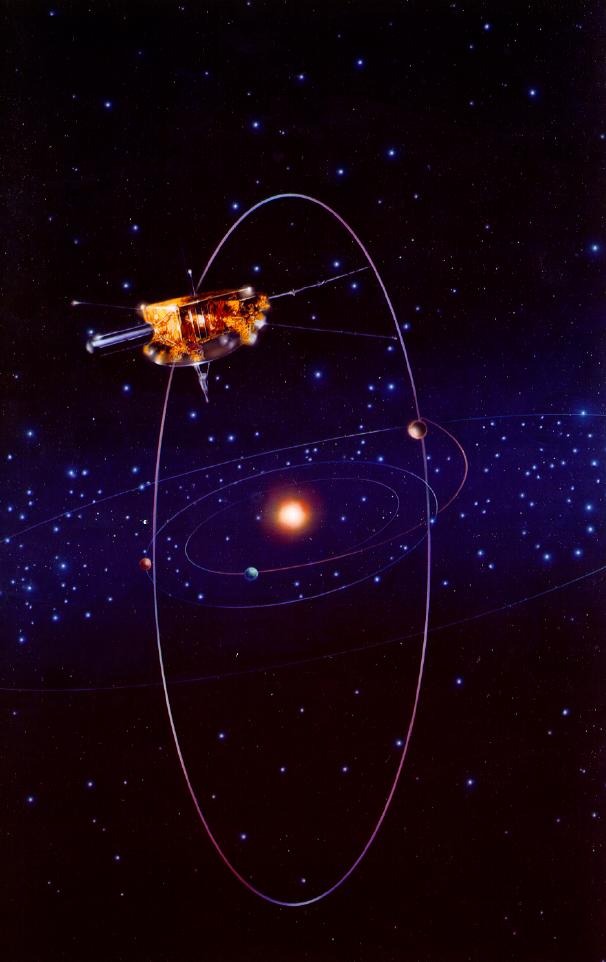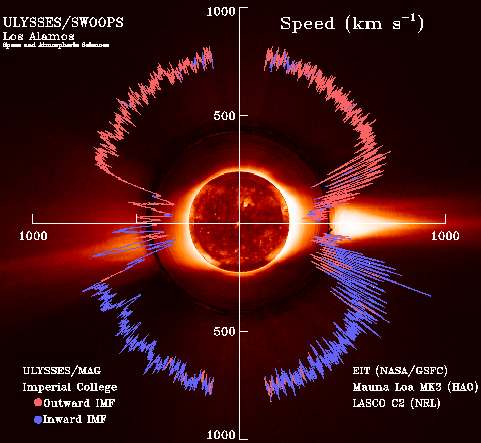Ulysses : Over the poles of the Sun

|

|
Ulysses is a unique mission - it is the only spacecraft in a polar orbit around the Sun. It is very difficult to give a spacecraft enough energy to escape from the ecliptic plane (in which the planets orbit the Sun) so after launch in 1990, the spacecraft first travelled to Jupiter, where the giant planet's gravity was used to slingshot the spacecraft into the orbit that would eventually bring it over the poles of the Sun. The mission is a long one - it takes 6 years for Ulysses to go once round the Sun. As the diagrams show, Ulysses was over the south pole of the Sun in 1994 and over the north pole in 1995, when the sun was close to minimum activity. The orbit continues so that Ulysses will be back over the poles again in 2000 and 2001 at solar maximum when the Sun is expected to be very different.
Unlike SOHO, for example, Ulysses does not take pictures of the Sun. Instead its payload includes, among others, instruments to measure the solar wind, magnetic fields, and high energy particles coming from the Sun.

This picture shows a polar plot of the solar wind speed measured by Ulysses during its first 6 year orbit leading up to solar minimum. It has been colour coded by the polarity of the magnetic field measured by an instument led by Imperial College in the UK, and has been overlaid on a composite of solar images. You can see that the solar wind is very different over the poles compared to near the equator where previous spacecraft had explored. Ulysses is helping to establish a global 3D view of how the Sun influences its environment (the heliosphere) through the solar wind, allowing us to better understand also its influence on the Earth.
At solar maximum, the solar corona, from which the solar wind originates, does not have the same simple structure as shown here for solar minimum. Thus we expect Ulysses to find a much more complex solar wind and magnetic field at high latitudes during its next two polar passes.
Ulysses takes its name from the hero of Dante's Inferno. According to Dante, Ulysses became bored after returning home to Ithaca and decided to start a new journey with his old shipmates to explore the world beyond Gibraltar, at that time completely unknown. Dante describes this as a "mondo sanza gente", an "uninhabited world beyond the Sun" where there are no planets, no possibility of life, no familiar features. In the story, Ulysses' crew mutiny out of fear and he exhorts them to continue "...to follow after knowledge and excellence".



|